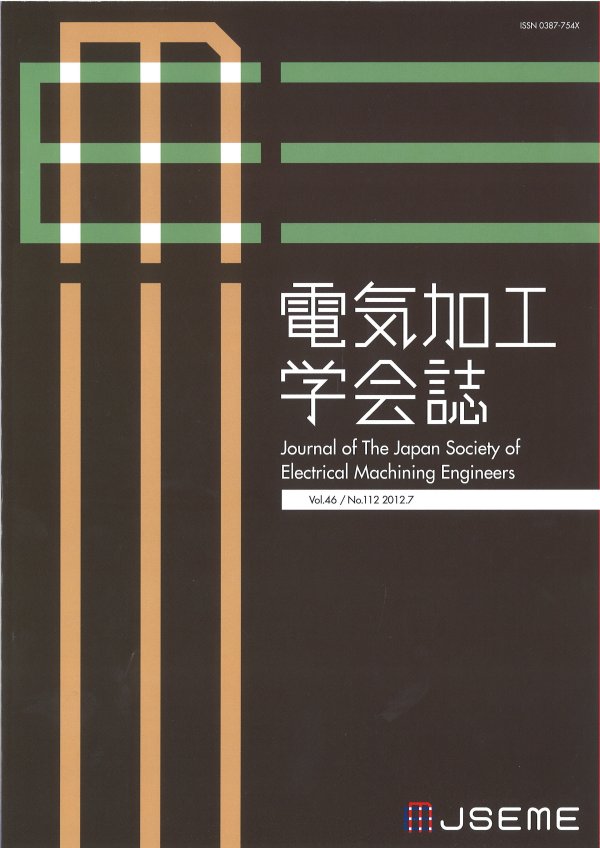All issues

Volume 46 (2012)
- Issue 113 Pages 126-
- Issue 112 Pages 66-
- Issue 111 Pages 7-
Volume 46, Issue 113
Displaying 1-2 of 2 articles from this issue
- |<
- <
- 1
- >
- >|
Paper
-
Kensei KANEKO, Yasushi FUKUZAWA, Ryuichi YAMADA2012Volume 46Issue 113 Pages 126-132
Published: 2012
Released on J-STAGE: August 03, 2013
JOURNAL FREE ACCESSMany insulating ceramic materials, such as Si3N4, ZrO2, and Al2O3, and the single-crystal materials ruby, sapphire, and diamond, could be machined by EDM and WEDM with the assisting electrode method. WEDM with the assisting electrode method has successfully machined various insulating ceramics materials, such as Si3N4 and ZrO2, up to a thickness of 100mm, but it has not been successful for SiC with a high melting point and a high thermal conductivity. In this study, the effects of the wire electrode material on machining properties were examined to obtain better machining properties such as a high removal rate and a low machined surface roughness. As a result, the machining characteristics were improved compared with those observed in previous trials. The discharge behavior was discussed by considering discharge waveforms and EDMed surface conditions.View full abstractDownload PDF (723K) -
- Metallographic analyses and characteristic evaluations of improved TiC layer containing Si -Nobuyuki SUMI, Akihiro GOTO, Hiroyuki TERAMOTO, Yusuke YASUNAGA, Yoshi ...2012Volume 46Issue 113 Pages 133-140
Published: 2012
Released on J-STAGE: August 03, 2013
JOURNAL FREE ACCESSA titanium carbide (TiC) layer formed by electrical discharge coating has high hardness and excellent wear resistance. Therefore, this layer has been applied to molds, jigs and tools to extend the lives of these devices. On the other hand, depending on prospective application, it may be difficult to apply the layer because of defects and roughness on its surface. In this study, to reduce the number of defects and roughness, an improved TiC layer was formed using a TiC electrode containing silicon (Si), and the characteristics of the layer were investigated. It was found that the defects of the improved TiC layer were fewer than those of the TiC layer. The more Si the electrode contained, the fewer the defects in the improved TiC layer. The roughness of the improved TiC layer was lower than that of the TiC layer, and the hardness of the improved TiC layer was higher than that of the Si layer by electrical discharge coating. The more Si the electrode contained, the lower the roughness and hardness of the improved TiC layer. Furthermore, the improved TiC layer had excellent corrosion, erosion and oxidation resistance, the same as the Si layer.View full abstractDownload PDF (1087K)
- |<
- <
- 1
- >
- >|